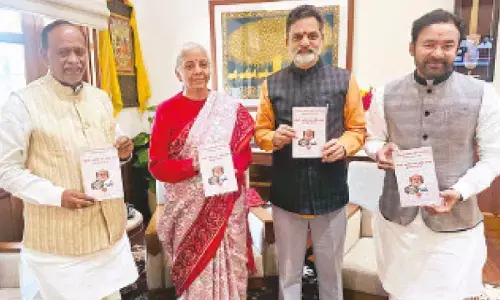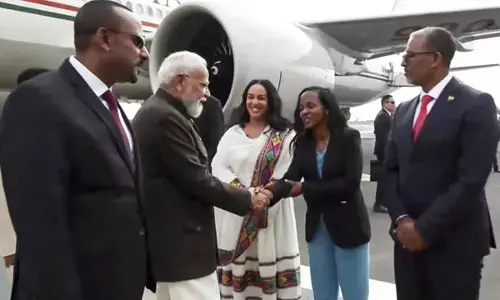Another major feat by ISRO

Another Major Feat By ISRO. Development of indigenous GPS system is inevitable for India, as access to foreign global navigation satellite systems is sometimes denied during hostile situations.
Development of indigenous GPS system is inevitable for India, as access to foreign global navigation satellite systems is sometimes denied during hostile situations
Indian Space Research Organisation (ISRO) has crossed yet another milestone with the successful launch of the IRNSS-1C, the third member in the seven satellite constellation of the illustrious Indian Regional Navigation Satellite System (IRNSS). ISRO’s work horse PSLV 26C majestically lifted off from the first launch pad of the Satish Dhawan Space Centre at Sriharikota at 1:32 am on Thursday.
The satellite separated from the launch vehicle 20 minutes later and was precisely injected into a pre-designated orbit sub-geosynchronous transfer orbit (sub-GTO) having a perigee of 282 km and apogee of 20,670 km at an angle of 17.86 with respect to the equator. This marked 28th successful launch of the PSLV. PSLV vehicle was flying in XL configuration, wherein additional propellant is used in the PSLV solid rocket boosters. It increases pay load capacity and thus it can put satellites in higher orbits. The earlier navigation satellites were also launched in XL configuration. With this launch, India is inching closer towards its dream of building its own Global Positioning Satellite (GPS) system. Soaring at a velocity of 9,604.87 metres per second, the PSLV brilliantly pierced into the sky against the back ground of half moon lit sky.
.jpg)
The IRNSS built with an estimated cost of Rs 4,250 crore is targeted to be completed by 2015. It comprises seven satellites with three of them placed in geostationary orbit and four in inclined geosynchronous orbit at an altitude of 36,000 km above earth. The first two in series-IRNSS 1A and 1B were launched on 1st July 2013 and on April 4th 2014. IRNSS 1C with a payload of 1,425 kg has a mission life of 10 years. Its launch initially scheduled for October 10 was postponed due to telemetric difficulties.
A team of 1,000 members worked relentlessly for the last four days and the PSLV was integrated in Sriharikota for 60 days to ensure a successful launch. The countdown for the launch kicked off officially on October 13 following the approval by the Launch Authorisation Board (LAB). The fourth member in this series will be up in space by December 2014. The launch was witnessed by Minister of State for Science and Technology, Jitendra Singh, who profusely congratulated the scientists for their meticulous efforts.
IRNSS will be very useful in active terrestrial, marine and aerial navigation, disaster management, vehicle trafficking, fleet management, as a navigation aid for travellers, for integration of mobiles, mapping and geodetic data capture. Development of indigenous GPS system is inevitable for India, as access to foreign global navigation satellite systems is sometimes denied during hostile situations.
India whose geographical borders are severely threatened and intimidated needs a system which can ensure a complete surveillance. Indigenously developed IRNSS is designed to provide accurate geographical service to users in the peninsula and its range can extend to primary service area of 1,500 km from the boundary. Thus the navigation system can meet the civilian and commercial services as well.
IRNSS provides two services: Standard Positioning Services (SPS) to all civilians and Restricted Service (RS) an encrypted service availed by authorised military users alone. The entire system has two segments – the space and the ground. The space segment consists of seven satellites working in tandem. The ground segment involves 21 ranging stations and a Master Control Centre (MCC). Some of which are located in lower latitudes to facilitates coverage to low inclination satellites. Within the next 30-45 days, ISRO is planning experimental test run of the Geosynchronous Launch Vehicle (GSLV) Mark-III, an unmanned crew vehicle. This will be a fore-runner to its long-term project of sending astronauts to space. The crew module will return to earth and can be recovered when it splashes into the sea near Port Blair.
While India is building its own navigation system, select countries have fully operational navigation systems. These are GLOSNASS of Russia, Global Positioning System of US, European Union’s Galieo (GNSS), China’s Beidou Satellite Navigation System and Japan’s Quasi-Zenith satellite system.
(The writer is scientist and freelance journalist and can be reached at [email protected])



















